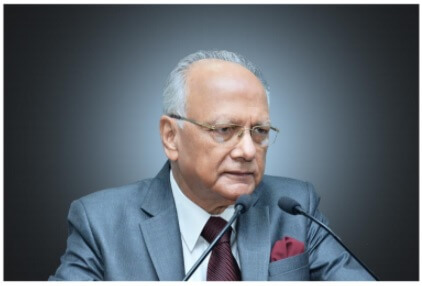Impact Of Covid-19 On Civil Aviation Sector In India

By K M Singh
VP PPF Former Member NDMA and DG CISFThe prolonged lockdown due to Covid-19 coming closely on the heels of economic slowdown in the world, including India is set to cause immense setback to all industries in India. One of the worst affected sectors will be the Civil Aviation. While other sectors may be able to gradually recover from the setback, the civil aviation sector is faced with a situation of virtual extinction unless rescued by the government.
As per the estimate released in late March by the Aviation Research Agency CAPA, which closely monitors civil aviation in the country, if flight operations in India remained grounded till June in the country, the country’s industries could incur losses of US$ 3.3 to 3.6 billion. The report further mentions that April -June quarter is traditionally considered one of the stronger quarters for the fiscal year for the Indian aviation industry, but as of now it looks to be a total wash out in the current scenario. It predicts that the carriers may need upto 12 months to get back to the capacity level that existed before Coronavirus grounded the aircrafts.
In this context it is significant that McKinsey & Company in its Covid-19 briefing materials has pointed out that among 30 major industries, the two most seriously affected by this pandemic are commercial aerospace and travel with an estimated reduction of 50% in 2020. Global airlines grouping the International Air Transport Association (IATA), in its report dated 17th April, estimates that almost 30 lakhs jobs are at risk in the Indian aviation dependent sectors. They have recommended immediate bail out package by the Govt.
Looking into the background of the growth of the civil aviation sector in India it is seen that until 2005 air travel in a India was very expensive and was by and large the prerogative of only affluent people or business executives etc. However, the advent of low cost airlines like Indigo (2006),Spice Jet (2005) and Go Air (2005) brought about a paradigm shift bringing air travel within the reach of an average citizen in the country. The enormous contribution of these LCCs may be judged from a report of Directorate General of Civil Aviation (DGCA) which mentions that “Indian air passenger traffic has grown by at least 16% annually over the past decade. In 2001 it was nearly 14 million passengers. In 2017 Indian airlines flew nearly 140 million passengers, most of them domestic. It is now the third largest aviation market in the world with growth rate that leaves the USA and China far behind”. The Indian aviation sector contributes a reported US$ 72 billion to the national GDP. After such rapid growth, the civil aviation sector is today at the cross roads with total uncertainty about its future. According to IATA, fuel cost in India, which accounts for 40% of the overall cost of low cost carriers is “well above the global average of 24%”. Besides, the fixed costs include lease rental of aircraft, labour expenses, sales & marketing, steep airport charges and other operating expenses.
Most of the low cost airlines that have come up in the last 15 years have only seen the good time in this industry. Thus, they have placed orders for a large number of planes. They have not built sufficient cash reserve to meet unforeseen situation like the present lockdown.Significantly, a plane on the ground costs the airline enormous amount. Out of about 650 commercial aircrafts in the country with all the airlines, about 50% are on lease. So even when they are grounded , the lease rentals have to be paid. Same is true of pilots, crew and other ancillary staff of the airlines. Thus, both machine and manpower are taking a heavy toll on the aviation industry. All these make the scenario in this industry very scary. One of the major challenges faced by the aviation industry is a massive plunge in the cash reserve as fleets remain grounded for a prolonged period. Even when these commercial flights become operational, the airlines will continue to face enormous problems like reduction in seats due to social distancing norms, no family/ leisure travel due to high cost of tickets and people preferring video conferencing instead of business travel etc.
Under these circumstances it is doubtful as to how many of the existing airlines will be able to survive. According to CAPA “most Indian airlines have not structured their business models to be able to withstand even regular shocks such as increased fuel prices or economic downturn, let alone once-in-a century crisis”. Needless to mention that even in the normal situation some of the major airlines like Kingfisher and Jet Airways with deep pockets could not survive the highly competitive aviation market in India. Thus, The Indian aviation sector lies perilously close to bankruptcy and bailing out airlines is inevitable also because of the important role air connectivity plays in the global economy.
For a balanced recovery it is equally important to bail out the airports because of the complimentary role played by it to to provide numerous logistic support to help the airlines fly. The prospective recovery of the aviation sector is as much dependent on the survival of the airlines as of the airports.
FICCI has sought a bail out package for the domestic aviation industry which includes direct cash support from the Govt, interest free soft loans and a two year tax holiday to help this sector overcome the Covid-19 crisis. It has also sought deferment of term loans by upto six months, 180 days credit window by the oil marketing firms and waiver of aircraft insurance premium among others. It has also suggested deferment of GST for the airlines as well as rebate on payment of taxes paid to date this year and/ or extension of payment terms for the rest of 2020 along with a temporary waiver of ticket taxes and other Govt imposed levies.
Concerned about the meltdown of the aviation sector countries like USA, UK, Finland, Norway, Sweden , Singapore and UAE etc have already announced financial packages or certain other measures of relief/subsidy to bail out their aviation industry and prevent millions of job losses in this industry.
In this backdrop, the Govt of India may consider certain relief measures and financial package to the airlines which may include support for salaries, exemption of airport charges for the period of disruption for reasons beyond their control, reduction on excise duty of ATF, bringing ATF under the GST, waiving GST for pilot/ technician trainings, suspending infrastructure charges at Indian airports and bearing the entire expense on airport security from the consolidated fund for around two years.








